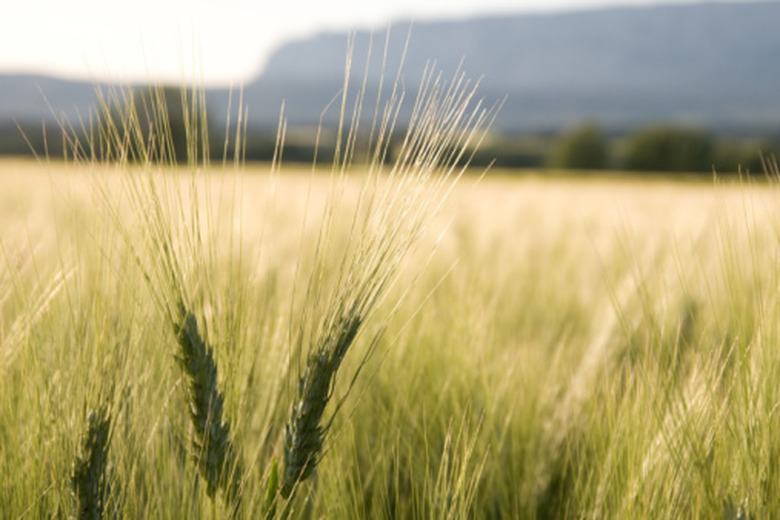The Difference Between Hard & Soft Wheat
Since its domestication in the Middle East about 10,000 years ago, wheat has become the most popular cereal grain in the world. Farmers around the world plant it on more of the Earth's surface than any other crop. Although there are several wheat varieties grown around the world, they fall into two essential categories with distinct properties: hard wheat and soft wheat.
Hard Red Winter
Hard Red Winter
Hard Red Winter wheat is the most popular variety of wheat in the United States and accounts for about 40 percent of U.S. production. It has a high protein content and is a common ingredient in breads and all-purpose flour. Like all winter wheat, it is planted in the fall and harvested in early summer. In general, hard wheat has higher gluten and protein content and is preferred for leavening.
Durum
Durum
Durum is the hardest of all U.S. wheat varieties. It offers both a high protein and gluten content and is the chief ingredient in the semolina flour that makes up premium pastas. It also is well-suited as the base ingredient in Mediterranean breads. Durum is planted in the spring and can be either white or red. Though its benefits as a high-protein wheat are beneficial as a staple food, durum requires more milling than its softer cousins.
Hard Springs
Hard Springs
Two wheat varieties, white and red, are both hard and harvested in fall. Hard red wheat is the hardest of all wheat varieties but is not grown in the United States. Hard red spring wheat is prized for breads, hard baked goods, all-purpose flour and flour blends. The hard white variety yields a medium protein content and is similar to red wheat. It offers a sweet flavor and is used in breads, hard rolls, tortillas, oriental noodles, whole wheat and all-purpose flowers and brewing.
Soft Varieties
Soft Varieties
There are two major soft wheat varieties: soft red winter and soft white wheat. Soft red winter has a low protein content and is used as a blend in multipurpose flours, and for cookies, cakes, donuts and other fine pastries as well as flat breads, and crackers. Soft white is a low-protein wheat that offers high yields. It provides a lighter flour for cakes, crackers, cookies, pastries and it suits Middle Eastern flat breads.
References
Cite This Article
MLA
Smith, Sam. "The Difference Between Hard & Soft Wheat" sciencing.com, https://www.sciencing.com/difference-between-hard-soft-wheat-8166495/. 22 November 2019.
APA
Smith, Sam. (2019, November 22). The Difference Between Hard & Soft Wheat. sciencing.com. Retrieved from https://www.sciencing.com/difference-between-hard-soft-wheat-8166495/
Chicago
Smith, Sam. The Difference Between Hard & Soft Wheat last modified March 24, 2022. https://www.sciencing.com/difference-between-hard-soft-wheat-8166495/
